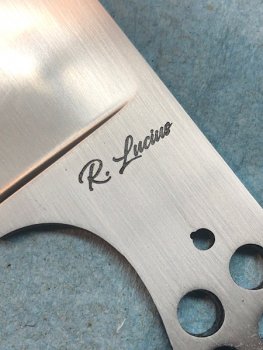MTBob
Well-Known Member
After less than a dozen applications my stencils from TUS are developing hair line cracks aground the image. Those cracks show up on the steel as small spider web lines around the image. I'm using a Personalizer Plus typically set at 3.5-4 and do a 2 step cycle, first etching then marking. I tape the stencil to the blade on all 4 sides when applying the pad. I called TUS and they said that the cracking was due to bending the stencil when removing it from the steel and said the stencil material was very brittle. They recommended that the stencil only be applied to the work piece with tape on one end and that the pad be moved across the stencil, moving the pad away from the tape. Apparently that will limit flexing in the stencil and resulting cracking. After each use I wash the stencil with windex, wash & dry it and then store it in a plastic envelope (not pressed flat).
The guy at TUS said that to fix this problem I needed to paint finger nail polish on the cracks around the stencil image.
Do you'll experience this kind of cracking? If so, what do you do to fix the problem?
The guy at TUS said that to fix this problem I needed to paint finger nail polish on the cracks around the stencil image.
Do you'll experience this kind of cracking? If so, what do you do to fix the problem?

